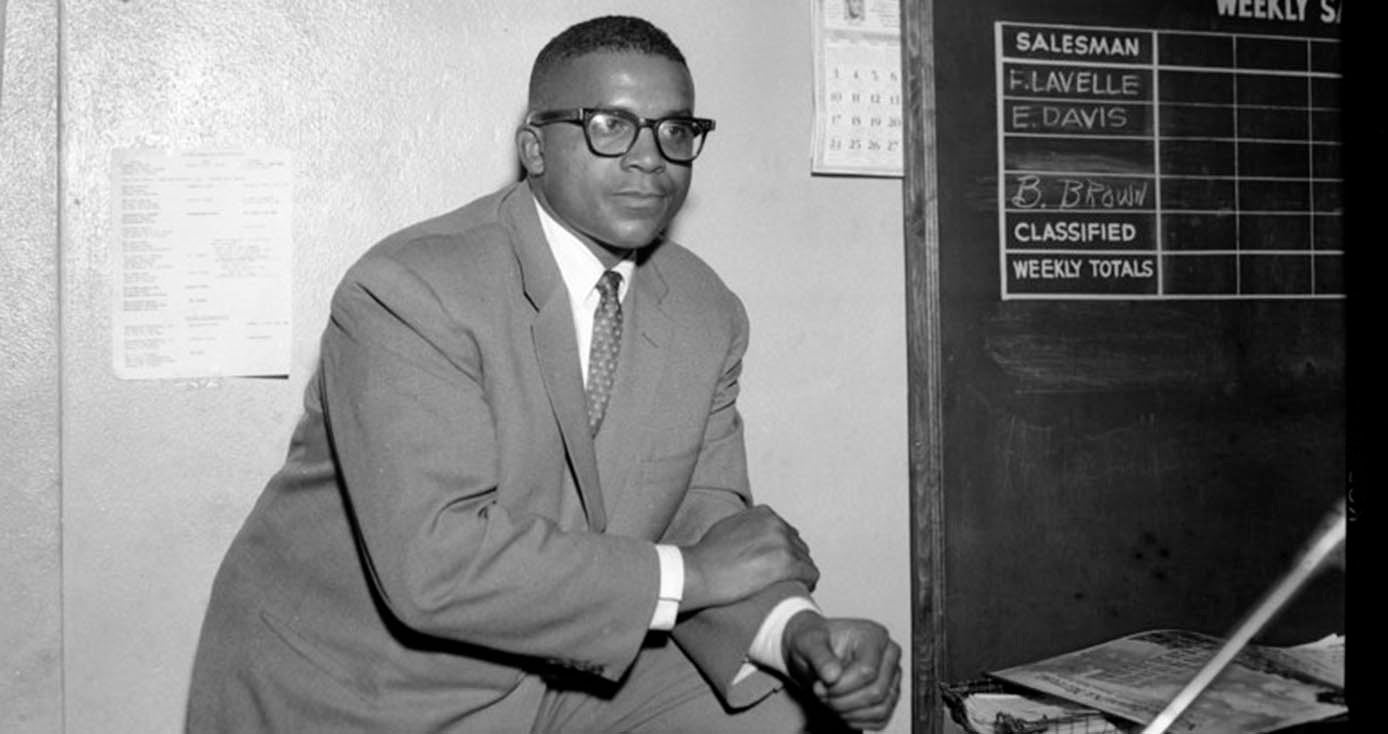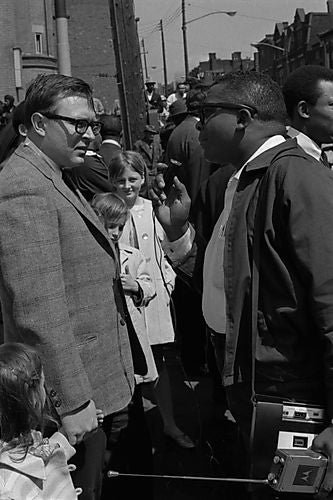
Subscribe to Pittwire Today
Get the most interesting and important stories from the University of Pittsburgh.Experience Journalist George Barbour’s (A&S ’51) Journey from Selma to Montgomery
In March of 1965, KDKA Radio newsman and University of Pittsburgh alumnus George Barbour (A&S ’51) volunteered to travel to Alabama to cover one of the marches being held by non-violent protesters seeking voting rights for African Americans. With racial tensions running high, it was considered too dangerous for a news outlet to send an African American reporter to cover the 54-mile trek from Selma to the state capital of Montgomery.
But Barbour, loaded down with a heavy backpack of radio and tape-recording equipment, set off on his assignment, marching with the likes of Martin Luther King Jr. and John Lewis. His experience, which included being chased by a group of angry white men, is told in “George Barbour: Journalist,” a new documentary by filmmaker Ken Love which will premiere at 7 p.m. on Feb. 11, 2021.
The film traces Barbour’s career from outlets in Baltimore and Richmond to the Pittsburgh Courier, where his award-winning articles exposed faulty hiring practices in local government, to his years at KDKA Radio and the harrowing experience down South.
As Barbour states in the movie, while walking the entire 54-mile trek: “In the 1965 civil rights war, Negroes, newsmen and Northerners are hated, and I am all three.”
Barbour’s daughter, Jacalyn Barbour, was 8 years old when her father covered that historic event. They and Barbour’s wife, Gloria Jean Cross Barbour, plan to watch the premiere together at their home in Bridgeville, Pennsylvania.
“Dad told us stories of everyday people he met on the march who were determined to do their part in bringing about social change,” she recalled. She and her brother Edward also heard the stories of Jim Letherer, an amputee from Saginaw, Michigan, who joined the march, and a woman in her seventies whose worn-out shoes forced her to walk barefoot. She told the newsman she was “marching for a better day for her children and her children’s children.”
Edward Barbour added that his father’s fortitude was a constant inspiration.
“I cannot imagine the odds and barriers that were present for Dad, as well as so many young Black children born into poverty before the Great Depression,” he said. “An additional element was the often-crippling atmosphere and ever-present barrier of racism; something that couldn’t be escaped even in a small Western Pennsylvania town like Oakdale. Nonetheless, he pressed onward with his early dream of becoming a journalist.”
Making the film
Filmmaker Love says the Barbour documentary actually was unplanned.
He and his teenaged son Daniel videotaped Barbour in 2002 for Love’s documentary “Newspaper of Record: The Pittsburgh Courier, 1907-1965.” Daniel asked the former Courier newsman the questions while Love ran the camera. After the taping, as Love started to pack up the lights and equipment, Barbour asked Daniel if he knew about the Selma march. He started telling the teen the story and Love became so enthralled he quickly set up the lights and camera again to capture the story.
“This project only happened because of the gift of knowledge that George passed to my son,” said Love. “Now we are passing it on to the next generation.”
It took Love years to track down 16 mm footage of the march, which he used along with Barbour’s original reporting from the event.
“Working with his original tapes … to be able to physically touch that history was pretty daunting,” said Love.
The filmmaker says Barbour’s humanity and love of life really shines through.
“My biggest takeaway,” said Love, “is that if you persevere and have a positive attitude, you have a wonderful chance of succeeding.”
Register and attend the premiere
Thursday’s 7 p.m. event is co-sponsored by Pitt’s University Library System and Office for Equity, Diversity, and Inclusion. Opening remarks for the free event will be provided by Pitt Chancellor Patrick Gallagher; Vice Chancellor of Equity, Diversity and Inclusion Clyde Wilson Pickett; Associate Professor of History Laurence Glasco, University Library System Director Kornelia Tancheva; and filmmaker Ken Love.
A panel of current and former journalists will convene after the screening of “George Barbour: Journalist” to discuss the film and its relevance today.
Panelists will include: Harold Hayes, retired news reporter from KDKA-TV; Elaine Effort, formerly with KQV Radio; Nathaniel Barbour, Barbour’s grandson and a doctoral student in physics at the University of Maryland; Pitt News reporter Sinead McDevitt; and Pitt student Ama Germain. Ervin Dyer, senior editor of Pitt Magazine and adjunct professor in the Department of Africana Studies, will serve as moderator.
Dyer says Barbour’s life speaks about the power of journalism and the courage it takes to tell some stories.
“His life is also a testimony to personal perseverance and overcoming obstacles of race and other social limitations,” he said. “The panelists will engage in a conversation about overcoming, covering race and the necessity of being a bold storyteller.”



